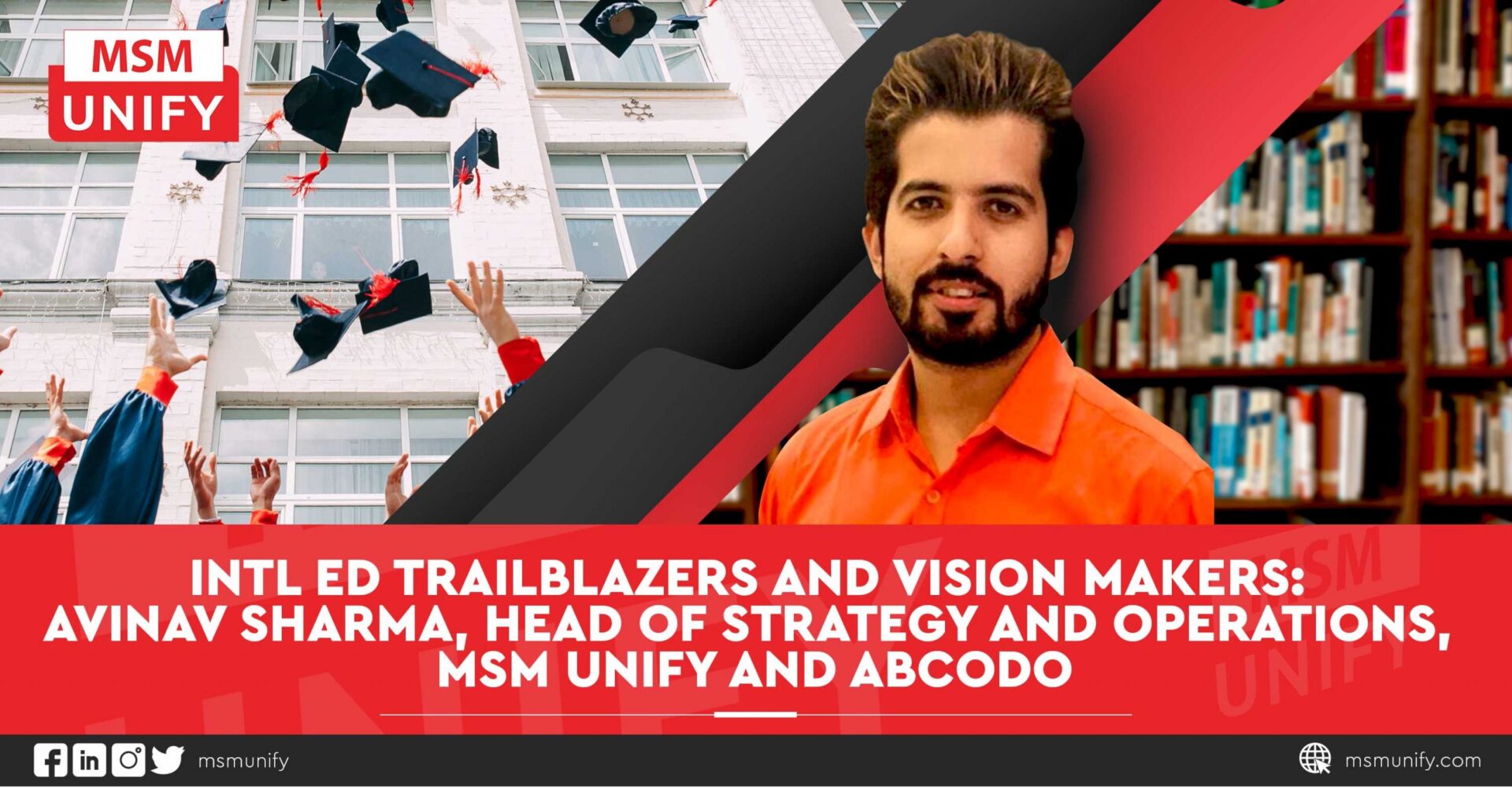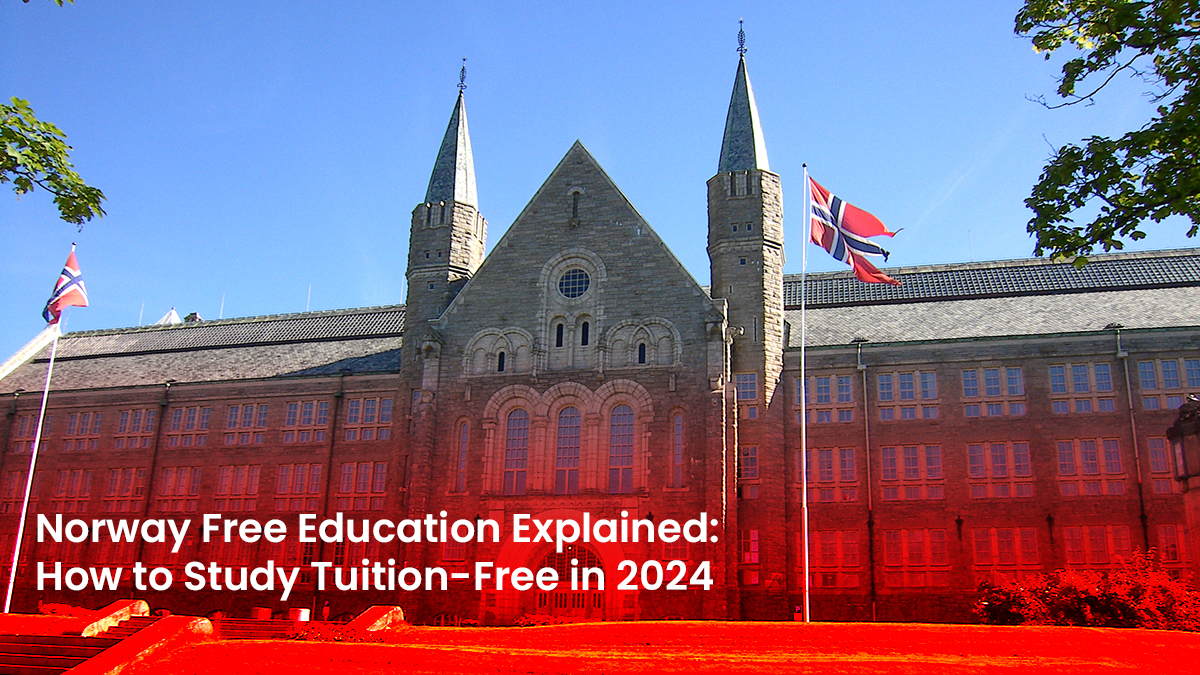As countries start reopening their borders to welcome international students back into their academic institutions for on-campus classes, there is a renewed and revitalized focus on student recruitment and how agents can be an instrument bridging higher education institutions (HEIs) to international students around the world.
We sat down with Avinav Sharma, Head of Strategy and Operations for MSM Unify and Abcodo, to get his insights about international student recruitment amid the pandemic and beyond.
Avinav Sharma graduated with a degree in electronics and communications engineering, being placed with top engineering companies in the world, giving him a strong background in science and mathematics. As engineering work was to bring him far and yearning for his hometown, he went looking for opportunities close to home and came across an opportunity to work as an education counselor for international education.
Fueled by his excitement in serving people from his hometown, Sharma invested in familiarizing himself with international education systems, the framework within the industry, and the visa processes of various countries. He also armed himself with the necessary education and certifications to expand his knowledge, making him an accomplished thought leader in international student recruitment.
Sharma is one of the extremely few individuals in the world holding professional certifications in leading countries. He successfully graduated as an Education New Zealand trained agent. He also completed the Canada Course for Education Agents (CCEA), US Agent Training Course (USATC), ICEF Irish Education Agents Course (IEAC), and Professional International Education Resources (PIER) Qualified Education Agent Counsellor (QEAC) for Australia.
Given your extensive experience in international education, what significant changes or movements in the industry have you seen in the last few years?
I was lucky to get a headstart in the industry when it was still picking up. When I started, the United States was and remains to be the top study destination for students in India. But by 2009, both Australia and New Zealand were rapidly becoming the favorite destinations for several Indian students, thanks to their strong progress in international education.
On top of the growing number of institutions and programs available for students, admission requirements were not as rigorous as that of US-based institutions. The application process and admission requirements were pretty straightforward. This proved to be appealing to students because it aligned better with students’ educational and career goals.
With the introduction of the UK’s Tier 4 Student Visa system, the country became a top contender for international recruitment, particularly for Indian students seeking study abroad opportunities. Aside from the vast choices of institutions and ease of the application process, it also helped that more and more students can easily comply with English proficiency, academic, and financial requirements.
How did technology evolve in this space?
In terms of the processes, a lot has changed since I started. During the early days of international recruitment, technology is still yet to take the front seat. Most processes were done manually as PDF applications had to be sent via emails. Academic institutions would have to send plenty of hard-copy brochures to the agent’s office. Agents would then have to get the application forms signed by the student applicants. It was a time-consuming and arduous process.
Thankfully, many of these institutions saw the need to leverage technology. With the increase in the speed of the Internet, international education became quickly accessible to students. Students can research universities and colleges and their course offerings. They can learn more about programs and how they will increase their chances of landing a job after graduation. The result? Agents had to re-visit their strategies, mainly upskilling through professional courses, industry courses, or certifications.
Fast forward to today, the international education industry is gaining a lot as we enter the edtech space. Industry leaders can take advantage of advanced technologies like artificial intelligence (AI), big data, data mining, data analytics, and the Internet of Things (IoT) to cater to all key stakeholders: institutions, agents, and students.
The reach and penetration of institutions are now far wider, attracting students from diverse markets. Study programs have undergone a massive restructuring, and new and innovative programs have come to meet industry needs. With the way things are looking, education will be driven by technology for sure.
Based on your insider knowledge and observations of the education industry, how do edtech platforms affect the traditional agency model and industry as a whole? How do they change recruitment across different points of engagement?
For a long time, traditional agents have been working with sub-agents or network agents, and the practice continues today. Sometimes, the business relies heavily on goodwill between two partners.
The availability of technology has paved the way for edtech platforms to fuel the exponential growth in international education. By zeroing in on technology, these platforms benefit heavily in amplifying the outreach of both institutions and agents. Institutions, for one, expanded their reach to new source markets. They were able to cultivate their recruitment frameworks and diversify their on-campus student population. Edtech platforms have made it possible for institutions to accomplish so much at a fraction of the cost because they never have to spend valuable resources on hiring their own staff and sending them to new destinations.
Agents on all levels—multi-city and multi-country operation agents to small office-based ones—benefit from edtech platforms by increasing their product portfolio. Agents often find it challenging to access high-ranking institutions because they are not available for agreements. With edtech platforms bringing a high volume of institutions on their turf, agents have a golden opportunity to offer a wide variety of programs in different institutions from different countries all over the world.
The end consumer in the entire process is the student, and I believe that recruitment should always have students at the front and center. Students benefit from edtech platforms. More options in terms of programs, institutions, and countries give them access to a more one-stop-solution-based approach.
The result? International education becomes highly accessible for all.
How does MSM Unify make a difference in the edtech space?
MSM Unify is an artificial intelligence (AI)-based student recruitment platform designed to make international student recruitment more effective and efficient. With its enrollment-focused solutions, MSM Unify caters to the needs of all the key stakeholders at all levels: institutions, agents, and students. The platform offers highly bespoke solutions to the institutions to support their current international student recruitment strategies and practices.
What’s nice about this AI-powered platform is it does not follow a one-approach-fits-all kind of solution. Rather, the focus is on providing solutions based on the needs and requirements of the institution. It promotes compliance-based student recruitment coming from well-vetted agents following the Agent Code of Conduct.
For agents, we are amplifying their portfolio and business outreach. We are offering them a technological tool that can manage their student data and can become a one-stop platform for all of their recruitment needs. Agents get access to thousands of programs right at the platform and are better equipped to offer study options to their prospective students.
Students are at the center of the recruitment, and MSM Unify is building an ecosystem where students can practically find almost anything related to their international education journey, spanning their pre-departure and post-departure from their home country.
The platform lets them access their applications through a dedicated login where they can monitor and track their institutional as well as third-party value-added services applications. MSM Unify is the only one of its kind to offer all these benefits in one SINGLE platform, and it will revolutionize the sector.
What is your vision or projections for the industry in the short and near term?
One thing is for certain: the international education industry is moving in the right direction by rapidly adopting technology at its core. A vast majority of institutions have spent millions of dollars to upgrade their systems, including updating their CRMs and bringing in a new set of tools. The pandemic, while it caused disruption, has been a critical aspect that accelerated the adoption of technology, particularly in the education space. It has led to the rise of online classes or virtual classes, something that would not be possible without optimum use of technological resources.
That said, having intelligent technological resources is the key to success for educational institutions. With it, they can deliver their academic courses to close to 200 countries around the world through the Internet.
There’s no doubt that many countries globally are still challenged by poor Internet bandwidth and the lack of access to mobile or computing devices. But it is worth noting that several institutions and students have adapted rather quickly and are trying to find harmony when it comes to blending traditional and digital methods of education.
Similarly, the international student recruitment sector also underwent a major overhaul due to the availability of technology.
If you would notice, most of the networking events and conferences are now happening virtually through video conferencing, allowing one-on-one or one-to-many interactions. Webinars have also become excessively common, with institutions doing a series of webinars to keep their agents and students updated about their programs and new changes.
In the long term, it is expected that we will see a strong hybrid delivery of programs. But this time, the virtual component may take the front seat as compared to on-campus delivery. However, it will vary from program to program. Campuses will become more intelligent through the use of AI. Study delivery methods, labs, and workshops will make excessive use of technology to offer students an immersive learning experience.
Key Takeaways
Education and technology go hand-in-hand, and academic institutions, agents, and students embracing the marriage of these concepts have much to gain. MSM Unify, through its AI-powered platform, will be a harbinger of easier, faster, and simpler student recruitment for all key stakeholders: institutions, agents, and students.












